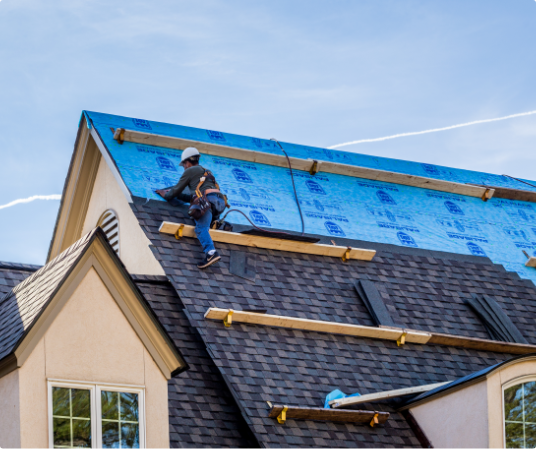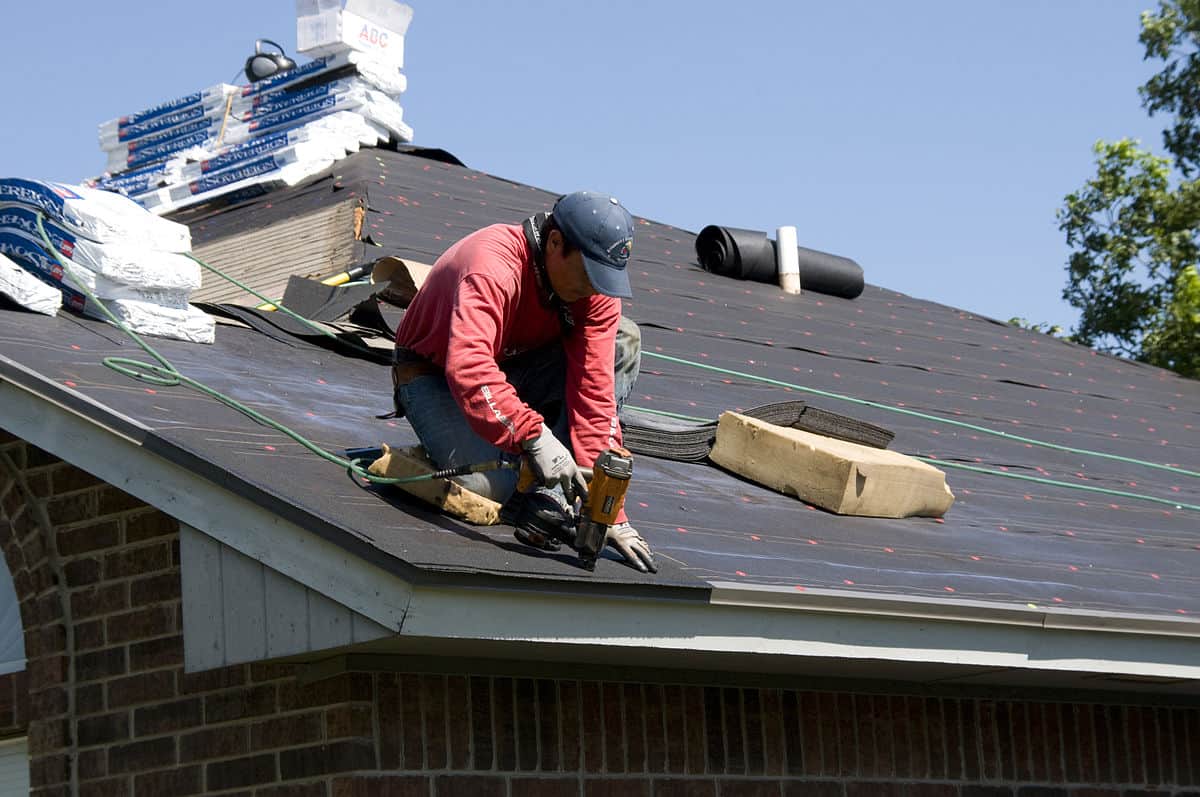Finest Practices for Ensuring Proper Roof Covering Ventilation
A well balanced intake and exhaust air vent ratio, generally 1:300, plays a critical duty, with intake vents ideally positioned at the reduced edge of the roofing for great air entrance and exhaust vents at the optimal for warm air leave. Maintaining insulation away from vents is crucial to protect against air movement restriction.
Understand Ventilation Essentials
Appropriately understanding ventilation fundamentals is essential for making sure the longevity and effectiveness of roof covering systems. Reliable air flow minimizes dampness build-up and temperature level extremes in the attic, both of which can lead to considerable structural damages gradually. A well-ventilated roof covering assists in protecting against common problems such as mold and mildew growth, timber rot, and ice dams, which can jeopardize the integrity of the roof materials and the underlying frameworks.
The key objective of air flow is to facilitate the movement of air, permitting for a constant exchange between the indoor and exterior atmospheres. This equilibrium is accomplished with a combination of intake and exhaust vents that collaborate to maintain optimal air flow. Intake vents, usually located along the soffits or eaves, permit fresh air to go into the attic space, while exhaust vents, often positioned at or near the roofing ridge, make it possible for hot, damp air to run away.
Secret elements influencing the efficiency of roof ventilation consist of correct placement, adequate sizing, and ensuring that both intake and exhaust vents are unblocked. Regular examination and upkeep are crucial to determine potential obstructions, damages, or inefficiencies in the ventilation system, consequently securing the roof's efficiency and resilience.
Sorts Of Roof Covering Vents
Roofing vents play an important duty in keeping efficient attic air flow and, by expansion, the overall health and wellness of the roofing system. Numerous kinds of roof vents are offered, each with unique benefits tailored to particular roof requirements.

Soffit vents are installed under the eaves and job in tandem with roof vents to guarantee a balanced intake and exhaust system. By permitting cooler air to get in from below, soffit vents facilitate the expulsion of warm air via top vents. Gable vents, located on the outside walls of the attic room, offer another efficient solution, especially in homes with saddleback roofs.
Examine Your Present Ventilation

Next, consider the age and problem of your roofing products and ventilation parts. Older systems may not abide with present building ordinance or may have worn away over time, minimizing their effectiveness. Conduct a complete assessment to identify any type of signs of wear and tear, such as corrosion, damages, or gaps that can endanger the system's performance.
Additionally, gauge the attic room temperature level and humidity levels. High temperature levels and moisture can indicate inadequate air flow.
Installation Best Practices
Reliable setup of roof air flow systems is paramount for guaranteeing optimal efficiency and durability. Proper installment starts with understanding the certain ventilation requirements of the building and the roofing it covers. This entails computing the proper ratio of intake to exhaust vents, usually adhering to the 1:300 rule, which Full Article stipulates one square foot of ventilation for every single 300 square feet of attic floor area.

The placement of vents is equally critical. Intake vents must be installed at the roof covering's reduced edge, often in the soffits, to allow great air to get in. Exhaust vents, on the other hand, need to be set up near or at the roofing system's optimal to promote the departure of warm, moist air. This produces an all-natural air flow that helps keep temperature level and moisture balance within the attic room space.
Seal all air vent connections meticulously to stop air leaks and prospective water seepage. Usage premium products and follow maker guidelines to guarantee longevity and effectiveness. Furthermore, integrating ridge vents with baffles can considerably enhance air movement effectiveness by preventing wind-driven rainfall and snow from getting in the attic.
Inevitably, exact installation of roof covering air flow systems alleviates prospective problems such as mold and mildew growth, ice dams, and structural damages, guaranteeing the roof's honesty and the building's overall health and wellness.
Routine Upkeep Tips
Uniformity in maintenance techniques is essential to making certain the lasting performance of roof air flow systems. During these evaluations, make sure that vents are complimentary of debris, nests, and various other blockages that could hamper airflow.
Cleaning up the vents is an additional important job. Make use of a soft brush or a vacuum cleaner to remove dust and particles from consumption and exhaust vents. Be careful not to damage the air vent screens or louvers during the procedure. Additionally, examine the visit this site attic room for any signs of water damages, which might endanger the integrity of the roof system.
Proper insulation is similarly essential. Make sure that attic room insulation does not block the vents, as this can badly restrict air flow. If any type of insulation has actually shifted or settled, reposition or replace it to keep an efficient obstacle.
Lastly, change any damaged or missing elements without delay. Busted vents, fractured shingles, or scrubby flashing can all add to poor air flow and needs to be addressed right away. Regular maintenance makes certain that the roof ventilation system functions ideally, consequently expanding the life expectancy of the roof covering itself.
Conclusion
Making sure proper roof covering ventilation is paramount for keeping the efficiency and toughness of a roofing system. Adherence to the 1:300 intake and exhaust air vent ratio, paired with the strategic positioning of vents, is important.
A balanced intake and exhaust air vent proportion, generally 1:300, plays a critical duty, with intake vents preferably positioned at the reduced edge of the roof for awesome air entrance and exhaust vents at the top for cozy air departure. Intake vents, normally situated along the eaves or soffits, allow fresh air to get in the attic room, while exhaust vents, this article usually located at or near the roof covering ridge, enable hot, damp air to leave.
Soffit vents are set up under the eaves and job in tandem with roof vents to guarantee a well balanced consumption and exhaust system. By allowing cooler air to get in from below, soffit vents assist in the expulsion of warm air through upper vents. Adherence to the 1:300 consumption and exhaust vent ratio, combined with the calculated placement of vents, is important.